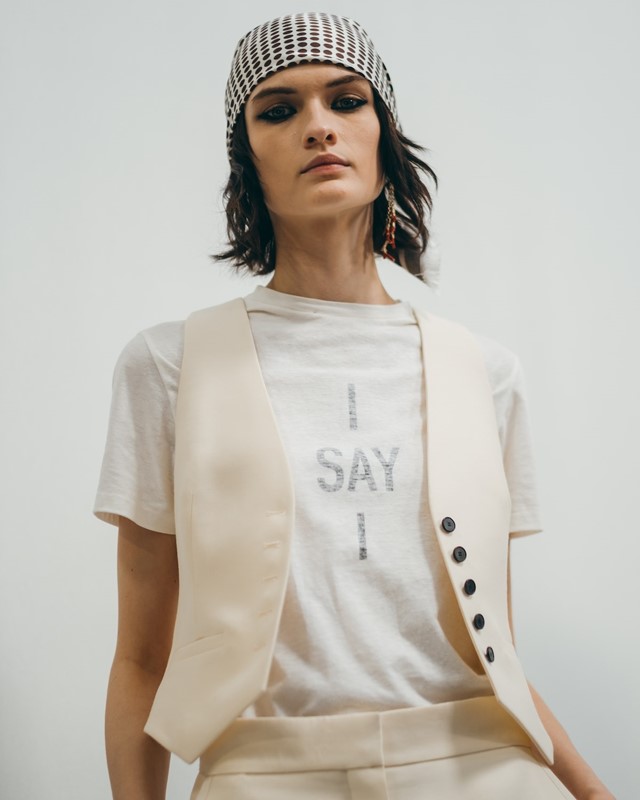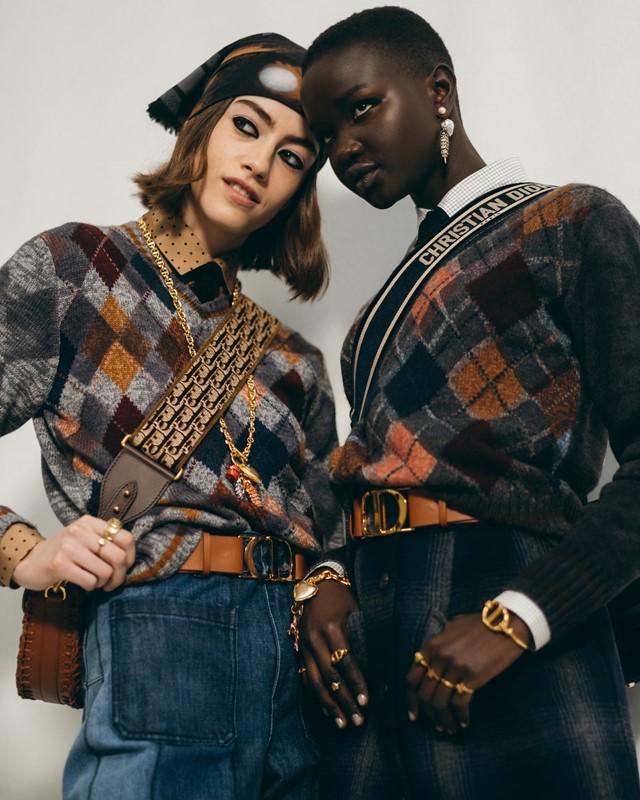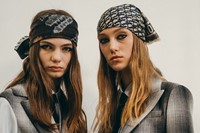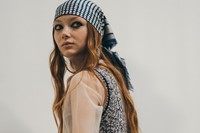Maria Grazia Chiuri collaborated with feminist art collective Claire Fontaine for the set of Dior’s Autumn/Winter 2020 show, which saw the designer expand on her ever-thoughtful vision of how clothing relates to womanhood
Maria Grazia Chiuri’s tenure at Dior has been energised by her ongoing interrogation of womanhood, and what that term means today. Her collections – often backgrounded by works by women artists from varying generations – strike ground between femininity and feminism; beauty and power. For Chiuri, it has proved fertile ground – and apt, considering she is the first female artistic director in the Parisian house’s history.
Yesterday afternoon, the Italian designer mined a similar vein for her Autumn/Winter 2020 collection. Shown within a cubic space erected in Paris’ Jardin de Tuileries, attendees were greeted by numerous phrases, constructed in neon-coloured lights suspended from the ceiling: “Women’s Love is Unpaid Labour”, “Feminine Beauty is a Ready Made”, “Patriarchy = Climate Emergency” and, among others, “Consent”, the latter repeated three times down the length of the runway (anonymous feminist collective Claire Fontaine was responsible for the installation, inspired by the writings of Italian art critic Carla Lonzi). It felt particularly resonant: the show coincided with the end of Harvey Weinstein’s trial in New York, in which the disgraced film producer was found guilty of criminal sexual assault in the first degree and rape in the third degree. Fashion, of course, is not immune to the outside world – nor to its own allegations of misconduct.
This made for a powerful statement, and a testament to Chiuri’s ongoing commitment to placing feminism at the centre of her vision for Dior. In her collections, though, the designer is more pragmatic – each is an evolution of the last, rejecting grandiose thematics for a thoughtful consideration of the demands of a woman’s life and what she might wear to face them. This often means looking inwards – as head of Dior, she faces plenty of demands of her own – considering how clothing figures in her own life and the lives of people around her. Such as her daughter, Rachele Regini, in her twenties, who has proved particularly influential to her work at Dior thus far.
This season, the designer began with two photographs of her own mother, Maria Pia – now in her eighties – who was a seamstress with her own atelier in Rome in the 1970s. “I have this memory of her saying that when women want to change the way they dress, the dress becomes a way to express themselves,” Chiuri said prior to the show. “Sometimes, you don’t remember the name of the designer, but you remember the name of the woman wearing the dress.” It led her to think about the part clothing had played in the construction of her own identity – growing up as a teenager in the 70s, visiting her mother’s atelier, encountering feminism for the first time – how she has used fashion “as a way of asserting herself, of rebelling, and communicating to others how she wanted to be perceived”.

It gave the collection a more personal feeling than much of her work at Dior so far: the house’s much-reinvented Bar suit, remade in a fine Milano knit opened the collection, suggesting a pervading sense of ease which ran throughout. There were simple checkered dresses – she noted both Monsieur Dior himself and Marc Bohan, creative director in the 1970s, were both fond of the motif – seguing into kilts and blanket-like ponchos. Chiuri has often cited Bohan as a particular inspiration for her vision of Dior: here, a closing raft of full-length gowns, in floating plissé or silk fringing, suggested the bohemian freedoms of the era both he and and Chiuri’s mother worked during.
“N’oubliez pas la femme,” goes Bohan’s most famous aphorism – “Never forget the woman”. It could well be attributed to Chiuri herself. Over three years into her tenure she has never strayed from this most simple directive: women are always at the very heart of what she creates.






